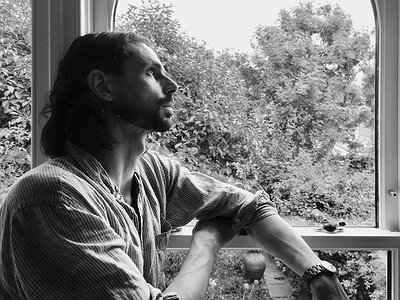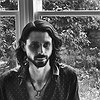How do you make use of technology? In terms of the feedback mechanism between technology and creativity, what do humans excel at, what do machines excel at?
Another great question. I use sampling extensively – I record instruments and quirky sounds and repurpose them, from more or less naturalistically sounding emulations to highly complex, novel sounds that are neither digital nor fully organic.
Machines excel at capturing, reproducing and manipulating a huge number of sounds. This opens up endless possibilities of creative exploration, which for me always starts in the realm of the human: humans excel at making mistakes, being imperfect, letting their personality shine through.
Collaborations can take on many forms. What role do they play in your approach and what are your preferred ways of engaging with other creatives, including the artists performing your work?
As I work in a hybrid live/electronic format, the production process is inherent in my music. Working with others for me mostly takes the form of commissioning sound recordings for later use.
How is writing the music and having it performed live connected? What do you achieve and draw from each experience personally? How do you see the relationship between improvisation and composition in this regard?
Interesting question. I haven’t performed my music live for a while – for similar reasons as in my answer to the previous question. I see certain forms of music a bit like filmmaking vs the theatre. One wouldn’t expect to see edits, colour grades and montages in the theatre but these are essential parts of the film viewing experience. In the same way, music that is conceived in a production process has dimensions that live performance cannot even begin to approximate.
But live music has a huge place in our culture of course, and for me personally. At a very basic level, music connects us to our heritage (through song and dance) and our families.
Time is a variable only seldomly discussed within the context of contemporary composition. Can you tell me a bit about your perspective on time in relation to a composition and what role it plays in your work?
To state something obvious, sound happens over time of course, and meaning for me, comes out of how that time is structured by the sound events. I like dense, highly filled-out temporal space sometimes, and other times I like sparse, empty spaces that leave lots of breathing room. This variability echoes my love of different ways of relating to other humans – sometimes intensely and full of excitement, sometimes with a lot of distance, space and time for reflection.
The idea that how music structures time represents and mirrors our human relationships over time is becoming a big discussion topic in the world of psychology and therapy. I am personally fascinated by this parallel and feel intuitively that it makes a lot of sense. If anything, this thinking makes me want to further increase my range of possible expression in my music in order to match the freedom we have in our relationships.
How do you see the relationship between the 'sound' aspects of music and the 'composition' aspects? How do you work with sound and timbre to meet certain production ideas and in which way can certain sounds already take on compositional qualities?
For some people, the distinction between timbre and compositional aspects is blurring. For me there is always the aspect of harmony, melodic awareness etc but the sonic texture is often a key factor in deciding where to go next. Timbre feels more “haptic”, to borrow a word from your previous question – it relates to how things might impact on the skin, whereas composition relates more to the inner world of feelings and moods.
Our sense of hearing shares intriguing connections to other senses. From your experience, what are some of the most inspiring overlaps between different senses - and what do they tell us about the way our senses work? What happens to sound at its outermost borders?
For me, the visual sense is one of the most evocative. I relate very strongly to still images, geometry and patterns of light. These create internal movements of energy that for me, can be easily captured and transformed into sound patterns. The relationship between body movement and sound is also very direct for me.
The borders of sound are a difficult one for me. I have a certain amount of hearing damage from a youth spent performing in loud rock bands – this makes me sensitive to sudden loud noises. I therefore try to limit my exposure to noise in general.
Art can be a purpose in its own right, but it can also directly feed back into everyday life, take on a social and political role and lead to more engagement. Can you describe your approach to art and being an artist?
My approach is simple. I create, make and produce every day. This does not always take the form of music composition – it can be visual artwork, or a piece of music programming that will unlock new possibilities, or a loaf of bread, or devising new group processes like the “play date”. The main thing is that the habit of bringing something positive out in the world is nourished every day.
It is remarkable, in a way, that we have arrived in the 21st century with the basic concept of music still intact. Do you have a vision of music, an idea of what music could be beyond its current form?
Alongside the incredible fragmentation of tastes, genres and styles there is also an undercurrent of a need for experiences that unite and provide solace in our culture. I believe that new forms of “species consciousness” are emerging slowly; a strong awareness of being human over and above belonging to a particular identity. Some of these will need rituals and sacred forms, including music. So, I think there is a place for the return to the spiritual in art, and for meaning beyond the expression of the self and personal ambition.






